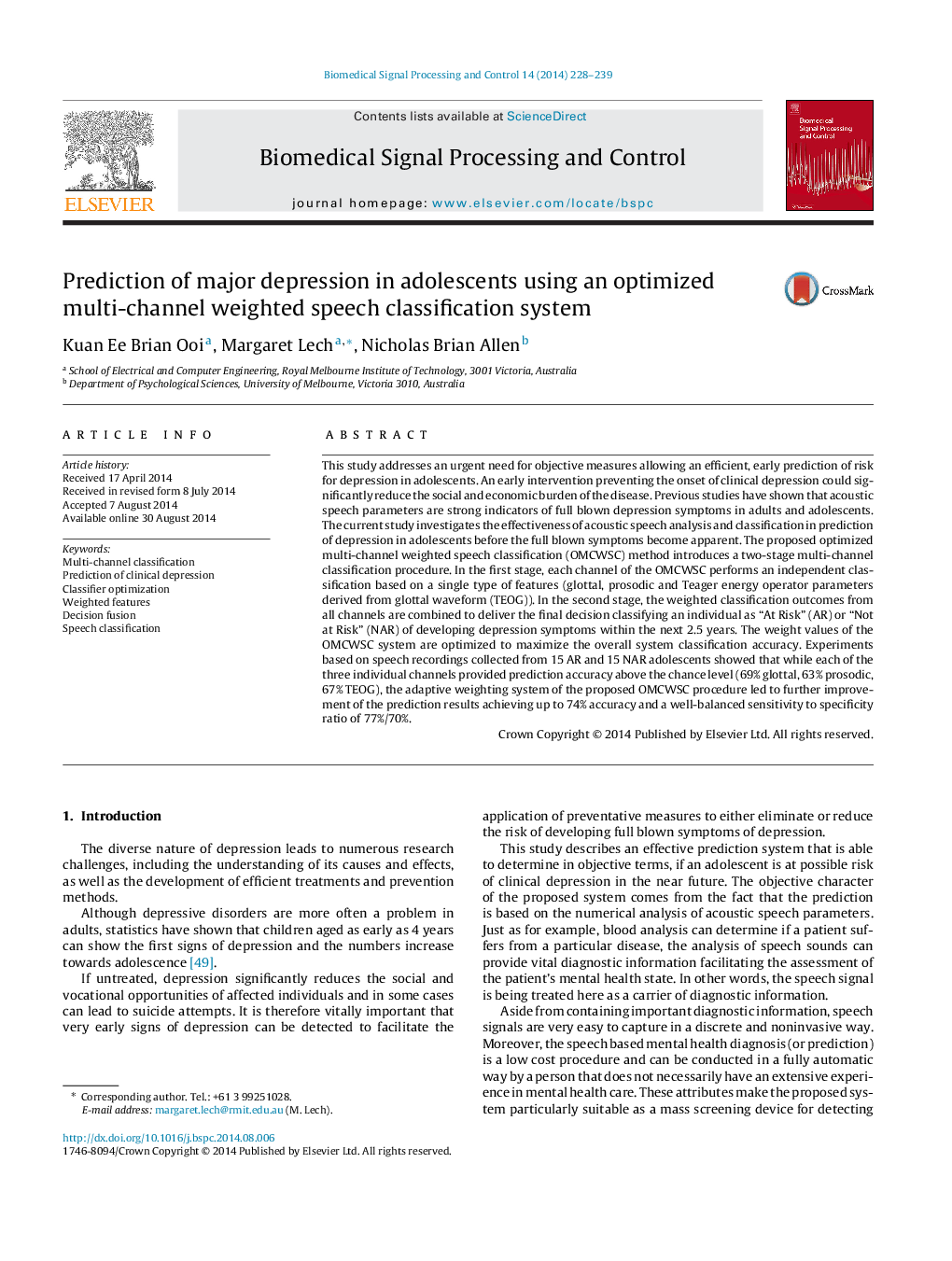| Article ID | Journal | Published Year | Pages | File Type |
|---|---|---|---|---|
| 558021 | Biomedical Signal Processing and Control | 2014 | 12 Pages |
This study addresses an urgent need for objective measures allowing an efficient, early prediction of risk for depression in adolescents. An early intervention preventing the onset of clinical depression could significantly reduce the social and economic burden of the disease. Previous studies have shown that acoustic speech parameters are strong indicators of full blown depression symptoms in adults and adolescents. The current study investigates the effectiveness of acoustic speech analysis and classification in prediction of depression in adolescents before the full blown symptoms become apparent. The proposed optimized multi-channel weighted speech classification (OMCWSC) method introduces a two-stage multi-channel classification procedure. In the first stage, each channel of the OMCWSC performs an independent classification based on a single type of features (glottal, prosodic and Teager energy operator parameters derived from glottal waveform (TEOG)). In the second stage, the weighted classification outcomes from all channels are combined to deliver the final decision classifying an individual as “At Risk” (AR) or “Not at Risk” (NAR) of developing depression symptoms within the next 2.5 years. The weight values of the OMCWSC system are optimized to maximize the overall system classification accuracy. Experiments based on speech recordings collected from 15 AR and 15 NAR adolescents showed that while each of the three individual channels provided prediction accuracy above the chance level (69% glottal, 63% prosodic, 67% TEOG), the adaptive weighting system of the proposed OMCWSC procedure led to further improvement of the prediction results achieving up to 74% accuracy and a well-balanced sensitivity to specificity ratio of 77%/70%.
